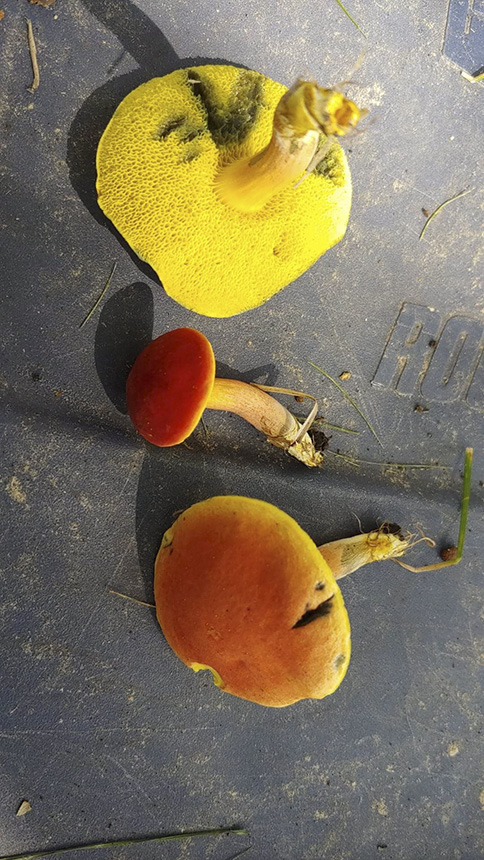
Ruby Bolete (Hortiboletus rubellus) is a small, red capped, blue staining mushroom. It occurs in Europe, the United States, southern Canada, and Mexico. It reaches the western extent of one part of its range in eastern Minnesota. It is found in summer and fall in woodlands, parks, and gardens. It grows on the ground near oaks and other hardwood trees.
The cap is small, no more than 2⅜″ in diameter, and is bright but dark pinkish-red. This is the feature that gives the mushroom its common name. It often has a thin yellow or whitish band around the margin. The pore surface on the underside of the cap is yellow. It quickly stains dark blue when bruised. The stalk is up to 2¾″ long, is mostly red, and has many tiny red dots. When cut lengthwise, the flesh of the stem reveals numerous, tiny, bright red or carrot orange dots near the base.
Ruby Bolete is edible but it has a soapy taste, and like other boletes, it is often infested with maggots.


